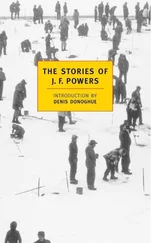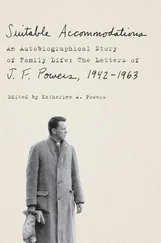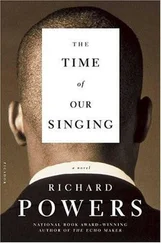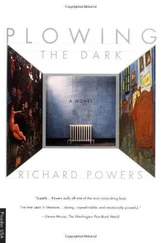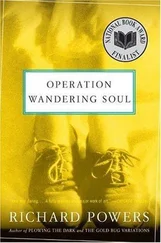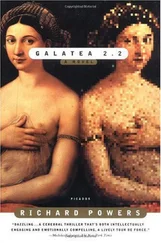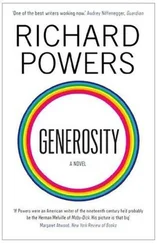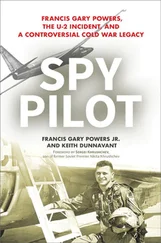Rothmann embraces them, and together, in long, brazen lines of modal melody, they sing in ecstatic counterpoint:
Mine and Thine, Thine and Mine?
Live in light! Live in beauty!
There is no life without dying into the One.
Where else to place your hope, your joy, your love?
One false world is ending,
The true one will soon arrive.
No fulfillment but in hunger.
No safety but through danger.
Ready yourself: the day is here.
In the building passacaglia, Rothmann works his way downstage to join John of Leiden. He asks the prophet to baptize him again, to give him the danger of rebirth. He and John sing a buoyant duet, each line based on a different tetrachord. John leads Rothmann to center stage and into the marketplace fountain. The singing stops and the orchestra falls silent.
A solo cello starts up Luther’s baptismal chorale, Christ unser Herr zum Jordan kam . The two men enter the fountain up to their waists. A second cello harmonizes the first in simple fifths and thirds. The Dutchman lowers Rothmann until the preacher goes under. Strings now play all four lines of the chorale, its harmonies nudged by accidentals into a mad experiment. Rothmann stays underwater way too long. He lunges back up, gasping and dripping. The orchestra launches a triumphant treatment of the chorale in the driving harmonies from the early 1990s, the sounds of the falling Wall.
The spectacle awes the market crowd. An old woman asks for her own full immersion. She sings the most haunting aria of the first act: So near the grave, I find this birth. Together, John of Leiden and Rothmann baptize her. Two weeping girls in their teens demand to be next, while tradesmen stop to witness.
A trill in the flutes alerts the stage. The woodwinds rush forward through a flurry in the horns. A march unfolds, so forceful that even the skeptics are caught up in it. More bodies plunge into the fountain. The reborn emerge from the water and wander offstage in a state of grace. Once in the wings, they run back behind the flats, slip into dry clothes, and reenter stage right, as newcomers to the commotion. So the chorus multiplies until belief is everywhere.
The march carries the crowd along on a public flood. A clear key — E major — emerges, rich with the vengeance of shared faith. Believers and unbelievers, foreigners and natives, prophets and merchants, the elect and the damned, swirl together in a frenzied tutti.
By now even the untrained ear can hear how all the scene’s material — the opening theme, Rothmann’s aria, John of Leiden’s motif, and Luther’s chorale — fit together into this gathering chorus. As the ever-renewing crowd plunges into the pool, Rothmann and the Dutch messengers, lifted up by the circling strings, sing a simple, unison, Gothic lullaby drawn from the words of Saint Paul:
Darkness is passing,
The night is over,
A new dawn makes its way.
My piece might be all around you, and you’ll never know. Cellular songs everywhere, by the hundreds of millions.
The terror of an empty auditorium, two weeks before opening. Two thousand five hundred empty seats. Four and a half rings of balcony, stacked up like a beehive. Scattered bodies dot the sea of red. Els cowers near the front of the house while, onstage, dozens of builders put the last touches on the City of God.
He has needed forty months to deliver 170 minutes of music. During those years, the war that has lasted since his childhood comes to an end. The evil empire crumbles into a dozen-plus countries. All the world’s data weaves together into a web. In the desert on the far side of the planet, Els’s country goes to war, made godlike by technology. The apocalypse of smart bombs and computer screens would all have made for dazzling opera if Els hadn’t already been busy with one — an opera as strange to the present as the present has become to him.
His work is over now. The brainstorming, the interminable phone conferences, the fights over cuts and simplifications. The score has been frozen for weeks, past fixing. Still, he hangs around in the cavernous hall, sitting twenty rows back from the orchestra pit, keeping the final stages of production together on the sheer force of his teeth-gritting will.
Behind the singers, in the recesses of the great stage, carpenters complete the cathedral’s west portal. Siege engines slide by on dollies. Artisans in overalls snap a pair of volutes into place on a towering flat that hangs from a batten. It panics Els, still, to count the people employed to bring to life something that began on his cabin’s drawing table. He still can’t quash the urge to jump up and shout, Oh, no, thank you! Please don’t bother.
The goal seemed simple enough: raise the dead and make them sing. And Els has done that, these last three years. His ghost dictation filled hundreds of pages. For forty months, he has hoarded the pile of manuscript, showing it to his collaborators only under threats of violence. Every few months, he glimpsed something worthwhile in the growing score. Once, near the finish, he caught his breath at the sounds of real inspiration.
Bonner and his thugs came and took the pages away from him by force. And somehow in the course of a few more months, the team of craftsmen have turned his obscure secret formulae into theater. He’s stunned, sitting in the crepuscular hall, to discover how good the first act sounds — how often it captures the bright, poisonous, ample world he lived in during his thousand-day trance.
The pit orchestra is a special forces team. Four decades ago, Els’s tricky polyrhythms and kaleidoscope of keys would have been unplayable. But these seventy crack musicians, raised from infancy on perfect recordings, tear through his score as through a show-tune medley. The leads, too, are superb. The self-styled prophet and his sexy consort, the ousted bishop returning at the head of a powerful army, the demented tailor-king: all sung by shining young singers.
Bonner is everywhere at once — upstage, downstage, offstage in the wings, charming, berating, flattering, cajoling. He seduces the singers of both sexes, reblocks their entrances and exits. He sinks into dark reveries or belts out their arias the way he hears the phrases in his mind’s ear. The man strides through the theater the way the bedecked prophets parade through rebel Münster, and the awed cast regards him with that same wavering reverence that Münster gives the rogue Anabaptists.
He confesses to Els, far out of earshot of the cast, Every show I’ve done in the last two decades has been warm-up for this. You’ve served me up the perfect pitch, and I intend to hit it out of the park.
And a city rises up at his bidding: walls and towers, council chamber, the nave of a great cathedral. The set has all Bonner’s favorite mechanical gimmicks. It rotates and reassembles itself. There’s scrim projection, of course, with thousands of now digitally driven images. The costumes are way over budget. The production adds several hundred thousand dollars of debt to the company’s already shaky ledger. The businessmen try to rein in the uprising, but Bonner tells them what any good rebel prophet knows: every rich donor on earth will follow you to the stars, if they think you can reach God on His unlisted number.
Three months into composing, Els discovered that the opera had already been written: Meyerbeer’s Le prophète. Any real composer would have learned the mid — nineteenth century drama in school; but Els’s education was hijacked by the avant-garde. He called Bonner in a panic.
Richard, I’ve sunk you. We’re finished.
When Els calmed down enough to give the details, Bonner just laughed.
Читать дальше

